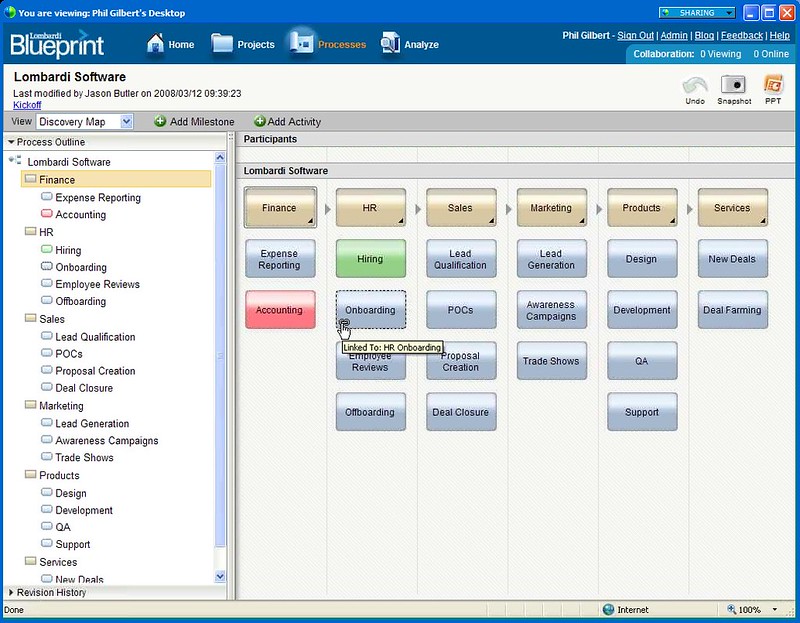I met Robert Shapiro years ago, when I worked for FileNet and he was part of the impressive brain trust at Meta Software, but now he’s with Global 360 and here to talk to us about BPM and workforce management, which focuses on using analytics, simulation tools and optimization techniques together with a workforce scheduler.
He started with a quick overview of simulation in a BPMS environment, where a discrete event simulation is run based on scenarios that include the following:
- A set of processes to be simulated
- Incoming work (arrivals), both actual (from a BPMS or other operational system) and forecast
- Resources, roles and shifts, including human, equipment and technology resources
- Activity details, including the duration of each activity (likely a distribution) and the probability of each decision path.
The output of the simulation will show the staff requirements by role and time period, staff and equipment utilization, cycle times and SLAs, unprocessed work and bottlenecks, work arrival profile, and an activity summary.
He then went on to discuss workforce management schedulers, which is used to assign detailed schedules to staff within an organization based on the work load and the resource characteristics (usually from an HR management system). Note that I’m not talking about assigning work within a BPMS here; this is more general scheduling technology for creating a schedule for each resource while trying to precisely match the work load. Factors such as holidays, vacation, union rules and other factors that determine who may do what are all taken into account.
One of the key inputs into a workforce scheduler, however, is exactly what’s output from a process simulator: workload demand on a time basis. By working with these technologies together, it’s possible to come up an optimal workforce size and schedule as follows:
- Gather analytics from a BPMS on work arrival patterns, resource utilization, work in progress and activity loads in order to extract workload demand (staff requirements by role and time period) for input to the scheduler.
- Using the actual workload demand data and other data on individual staff characteristics, generate a best-fit schedule in the scheduler that matches workload and staff, minimizing under and overstaffing.
- Feed the best-fit resource schedule back into the process simulator, and create a scenario based on this schedule and the actual analytics from the BPMS. The simulation can create an updated version of the workload demand and the effect of the new workforce assignment.
- The workload demand generated by the simulator is fed back into the scheduler, which generates a new best-fit resource schedule.
- Rinse and repeat (or rather, simulate and schedule) until no further optimization is possible.
This approach is most suited to well-structured business processes with repeatable patterns in work item arrivals, and a large total resource pool — Shapiro has seen 10-20% reduction in staff costs when these techniques are applied. A bit of scary old-style BPR fears here about cutting jobs, but that’s the reality in many industries.


